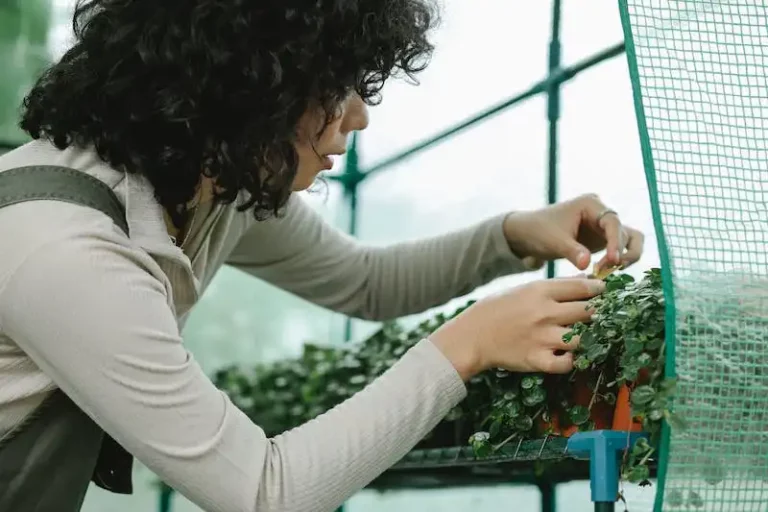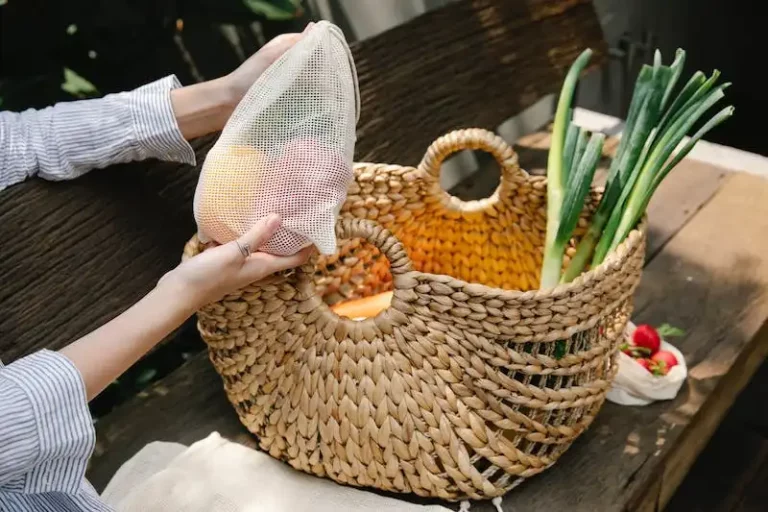Heirloom tomatoes are old-fashioned varieties of tomatoes that have been passed down through generations. Unlike their hybridized counterparts, heirloom tomatoes have not been genetically modified or crossbred to make them disease-resistant or more productive.
One of the key characteristics of heirloom tomatoes is their unique shape and color. They come in a wide range of sizes and colors, from small cherry tomatoes to large beefsteak tomatoes. Some heirloom tomatoes are even striped or have unusual patterns.
But it’s not just their appearance that sets heirloom tomatoes apart. They also have a distinct taste that many people find better than the more common hybrid varieties. Heirloom tomatoes are typically sweeter, juicier, and more flavorful than their hybrid counterparts.
Another advantage of growing heirloom tomatoes is that they are often easier to care for than hybrid tomatoes. They are very hardy and can withstand a wide range of weather conditions, including wind and extreme temperatures. They also tend to have a longer growing season, meaning you can enjoy fresh tomatoes for a longer period of time.
In terms of health benefits, heirloom tomatoes are packed with nutrients and antioxidants. They are a rich source of vitamins A and C and contain lycopene, a powerful antioxidant that has been linked to a reduced risk of certain types of cancer.
If you’re interested in growing heirloom tomatoes in your own garden, there are a few things to keep in mind. First, choose a sunny spot with well-drained soil. Heirloom tomatoes need at least 6-8 hours of direct sunlight to thrive.
When planting, make sure to space the tomato plants about 1-2 feet apart to allow for proper air circulation. This will help prevent the spread of diseases. You should also support the plants with stakes or cages to prevent them from falling over.
Heirloom tomatoes can be grown using a variety of methods, including in containers, raised beds, or directly in the ground. However, they are best grown using a drip irrigation system to provide consistent moisture and prevent diseases.
Pruning is also important for optimal tomato growth. Remove any suckers or side branches that grow below the first set of flowers to focus the plant’s energy on fruit production. You can also prune off any diseased or damaged leaves to prevent the spread of diseases.
Harvesting heirloom tomatoes is a delicate process. To avoid damaging the fruit, gently twist or cut the stems with a pair of scissors or garden shears. Heirloom tomatoes can then be stored at room temperature for a few days or in the refrigerator for up to a week.
Heirloom tomatoes are a versatile ingredient that can be used in a variety of dishes. They can be sliced and added to salads, used as a topping for pizzas and sandwiches, or cooked down to make soups and sauces. Their unique flavors and textures can elevate any dish.
In conclusion, heirloom tomatoes offer a unique taste and history that cannot be found in hybridized tomatoes. While they may require a bit more care and attention, the benefits of growing and enjoying heirloom tomatoes are well worth the effort.
10 Tips for Growing HEIRLOOM TOMATOES
Growing heirloom tomatoes can be a rewarding experience for any tomato grower. Here are 10 tips to help you grow healthy and disease-resistant heirloom tomatoes:
| 1. Start with good seeds | Use high-quality heirloom tomato seeds from reputable sources. This will ensure that you are starting with the best possible genetic lines. |
| 2. Begin with optimal soil conditions | Prepare your soil with organic matter and make sure it has good drainage. Heirloom tomatoes perform best in well-draining soil. |
| 3. Provide proper watering | Avoid overwatering or underwatering your plants. Drip irrigation systems can help maintain consistent moisture levels. |
| 4. Protect against diseases | Heirloom tomatoes are more susceptible to diseases than hybrid varieties. Use organic disease-prevention methods, such as crop rotation and proper pruning, to protect your plants. |
| 5. Support your plants | Heirloom tomatoes often have more vigorous growth than modern hybrids. Use stakes or trellises to support the plants and prevent them from falling or breaking. |
| 6. Prune for better fruit production | Remove suckers and lower branches to promote airflow and help the plants focus their energy on fruit production. |
| 7. Practice proper pollination | Heirloom tomatoes are open-pollinated, meaning they rely on insects or wind for pollination. Avoid using insecticides that can harm pollinators. |
| 8. Store heirloom tomatoes properly | Heirloom tomatoes have thinner skins and are less durable than commercially grown tomatoes. Store them at room temperature to keep them fresher for longer. |
| 9. Learn about heirloom tomato varieties | There are many different heirloom tomato varieties, each with its own unique flavors and characteristics. Explore different varieties to find your favorites. |
| 10. Enjoy the history and taste of heirloom tomatoes | Heirloom tomatoes have a rich history and often have more complex flavors than commercially produced tomatoes. Experiment with heirloom tomatoes in your recipes to experience their unique taste. |
1 • Learn to Graft
Grafting is a technique that allows you to combine the best traits of two different tomato plant varieties into one plant. This technique is especially useful for heirloom-like tomatoes, which can have unique flavors and characteristics that you want to preserve.
When it comes to caring for and pruning your tomato plants, grafting can help ensure that your plants are strong and healthy. Grafting can also help prevent diseases and improve overall plant vigor.
But why graft tomatoes in the first place? Well, there are a few reasons. First, grafting can help you grow tomato varieties that are more resistant to diseases and pests than others. Secondly, grafting allows you to experiment with different flavor profiles and textures by combining different tomato plant varieties. Lastly, grafting can be a profitable endeavor for commercial growers, as grafted plants are in high demand.
So how does grafting work? Grafting involves joining the stems of two plants together so that they grow as one. The key is to choose a healthy rootstock plant that has a strong root system and a compatible scion plant with desirable traits. The scion is the part of the plant that produces the actual tomatoes, while the rootstock provides the plant with a strong and disease-resistant root system.
When it comes to grafting tomatoes, you have a few different options. You can choose to graft them mechanically using a grafting clip, or you can learn to graft them by hand. Both methods have their benefits and it’s best to choose the one that suits your needs and skill level.
Once your grafted plants have shown signs of growth, there’s not much else you need to do. Just make sure to water them judiciously and provide them with the necessary care, just like you would with any other tomato plant.
So, why bother with grafting tomatoes when there are so many different types to choose from? Well, the term “heirloom” has a rich history and a special meaning to many tomato enthusiasts. Heirloom tomatoes are varieties that have been passed down through generations, typically grown from seed saved year after year. They are known for their unique flavors, vibrant colors, and often irregular shapes. Grafting can help preserve these heirloom varieties and ensure that future generations can enjoy their delicious taste.
In addition to preserving heirloom tomatoes, grafting can also be a way to create new and exciting tomato varieties. By grafting different plants together, you can combine the best traits of each plant to create a hybrid with improved flavor, vigor, and disease resistance.
Grafting can also be a useful tool for professional tomato breeders. By grafting different varieties together, breeders can speed up the breeding process and create new tomato varieties more quickly.
Finally, grafting can be a fun and rewarding hobby for any tomato enthusiast. It allows you to experiment with different flavor combinations, create unique and flavorful tomato recipes, and learn more about the fascinating world of tomato breeding.
So, whether you’re a commercial grower looking to increase your profits or a home gardener wanting to try something new, learning to graft tomatoes can help you achieve whatever goal you have in mind. Grafting allows you to create stronger, healthier plants with better yields and more flavorful tomatoes. So why not give it a try?
2 • Protect Support
When growing heirloom tomatoes, it is important to protect and support your plants. Here are some tips to help you do that:
1. Disease Control: Heirloom tomatoes are typically more susceptible to disease than hybrid varieties. To protect them, make sure to plant them in a location with good air circulation, as this helps to prevent the spread of diseases. Also, consider planting disease-resistant varieties to minimize the risk.
2. Trellising: Heirloom tomatoes tend to grow taller and more sprawling than other types of tomatoes. To support the plants, use trellises or stakes to help them grow upright. This not only helps to prevent the plants from falling over, but it also keeps the fruits off the ground, reducing the risk of rot and disease.
3. Watering: Heirloom tomatoes require consistent watering for healthy growth. Consider using drip irrigation to deliver water directly to the roots, as this helps to maintain soil moisture and prevents water splashing on the leaves, which can lead to diseases. Water generously, but avoid overwatering as this can cause the fruits to crack.
4. Remove Suckers: Heirloom tomatoes often produce more suckers than other varieties. These suckers are the new shoots that grow in the leaf axils of the plants. While some gardeners like to keep the suckers for more fruit production, removing them can help improve air circulation and reduce the risk of diseases.
5. Pollination: Heirloom tomatoes rely on insects or wind for pollination. To ensure proper pollination, you can gently shake or tap the plants to help distribute the pollen. Also, avoid using pesticides that may harm the pollinators.
By following these tips, you can protect and support your heirloom tomatoes, ensuring a healthy and bountiful harvest of delicious and nutritious tomatoes for your salads, sliced for sandwiches, or used in your favorite recipes.



